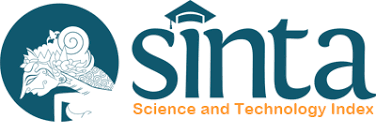Knowledge and Attitudes of Postpartum Mothers in Caring for Perineal Wounds in the Independent Practice of the Endang Midwife T S.S.T
Keywords:
Knowledge, Attitude, Care perineumAbstract
Incorrect perineal care can cause postpartum infection. This is due to the condition of the perineal wound area which is moist, thus supporting the growth of bacteria. Infections resulting from poor care lead to complications such as bladder infections and infections of the birth canal. Efforts are being made to prevent the risk of infection by taking good care of the perineal wound so that it can speed up the healing of the perineal wound. This study aims to determine the attitude of postpartum mothers regarding perineal wound care in the Midwife Independent Practice in 2022. The study used a descriptive method with a total population of 122 mothers giving birth for 6 months. The sample in this study were 30 postpartum women with perineal injuries in June-July 2022, sampling technique with Total Sampling Method. The results of the research on the healing time of perineal wounds in postpartum mothers showed that 63.33% of respondents had good knowledge, and 76.67% of respondents had a positive attitude. From this research, an active role is needed for community health service units, especially midwives' independent practice to provide perineal wound care counseling to postpartum mothers and check stitches at 1 week of postpartum period to the midwife.
References
Agus, R & Budiman. (2013). Kapita Selekta Kuesioner Pengetahuan Dan Sikap Dalam Penelitian Kesehatan. salemba medika. Jakarta.
Ambarwati, ER.(2010). Asuhan Kebidanan Postpartum. Nuha Medika, Yogyakarta
Andriani, Y. (2015). Prilaku Merawat Luka Perineum pada Ibu Nifas do Wilayah Kerja Puskesmas Darma Rini Kabupaten Temanggung. Artikel Ilmiah Kebidanan
Devita, R., Aspera, A. (2019). Hubungan antara Pengetahuan dan Paritas Ibu dengan Perawatan Luka Perineum di Bidan Praktik Mandiri Ratna Wilis Palembang Tahun 2018. Jurnal Kebidanan, 9(1), 70-75. https://doi.org/10.31983/jkb.v9i1.3971
Kementerian Kesehatan RI.(2014).Infodatin. diakses 12 Januari 2023. http://www.depkes.go.id/resources/download/pusdatin/profil-kesehatanindonesia/Profil-Kesehatan-Indonesia-2016.pdf.
Manuntungi, A. E. (2019). Faktor-faktor yang mempengaruhi lamanya penyembuhan luka perineum pada ibu nifas di ruang perawatan Rumah Sakit Mitra Manakarra Mamuju. Nursing Inside Community, 1(3), 96-103.
Notoatmodjo S. 2018. Promosi Kesehatan dan Ilmu Perilaku. Jakarta: Rineka Cipta
Ratih, R. H. (2020). Pengetahuan dan Sikap Ibu Nifas tentang Perawatan Luka Perineum. Jurnal Kesmas Asclepius, 2(1), 34-43.
Rismawati,R., Venny, V., & Yulizawati, Y. (2012). Hubungan antara Sikap Ibu Nifas terhadap Makanan Gizi Seimbang dengan Penyembuhan Luka Perineum di Klinik Bersalin Khairunnisa. Jurnal Ilmiah Kebidanan, 3(1). http://ojs.akbidylpp.ac.id/index.php/Prada/article/view/13
Saifuddin, BA. (2014). Ilmu kebidanan. Jakarta : PT. Bina Pustaka Sarwono Prawirohardjo
Sukarni K, I., & ZH, M. (2013). Kehamilan, Persalinan dan Nifas Dilengkapi Dengan Patologi (1st ed.). yogyakarta: Nuha Medika.
Walyani. (2015). Asuhan Kebidanan Masa nifas. Yogyakarta : PT. Pustaka Baru
Wawan, A. (2015). Teori dan Pengukuran Pengetahuan, Sikap, dan Perilaku Manusia Yogyakarta: Muha Medika.
Wawan, A. (2015). Teori dan Pengukuran Pengetahuan, Sikap, dan Perilaku Manusia Yogyakarta: Muha Medika.
WHO. (2016). Maternal mortality. diakses 16 Januari 2023. http://www.who.int/gho/maternal_health/mortality/maternal/en/index2.ht ml
Yulianti, L. (2014). Gambaran Perawatan Ibu Nifas di Wilayah Kecamatan Miri Seragen.Naskah Publikasi. Surakarta

















